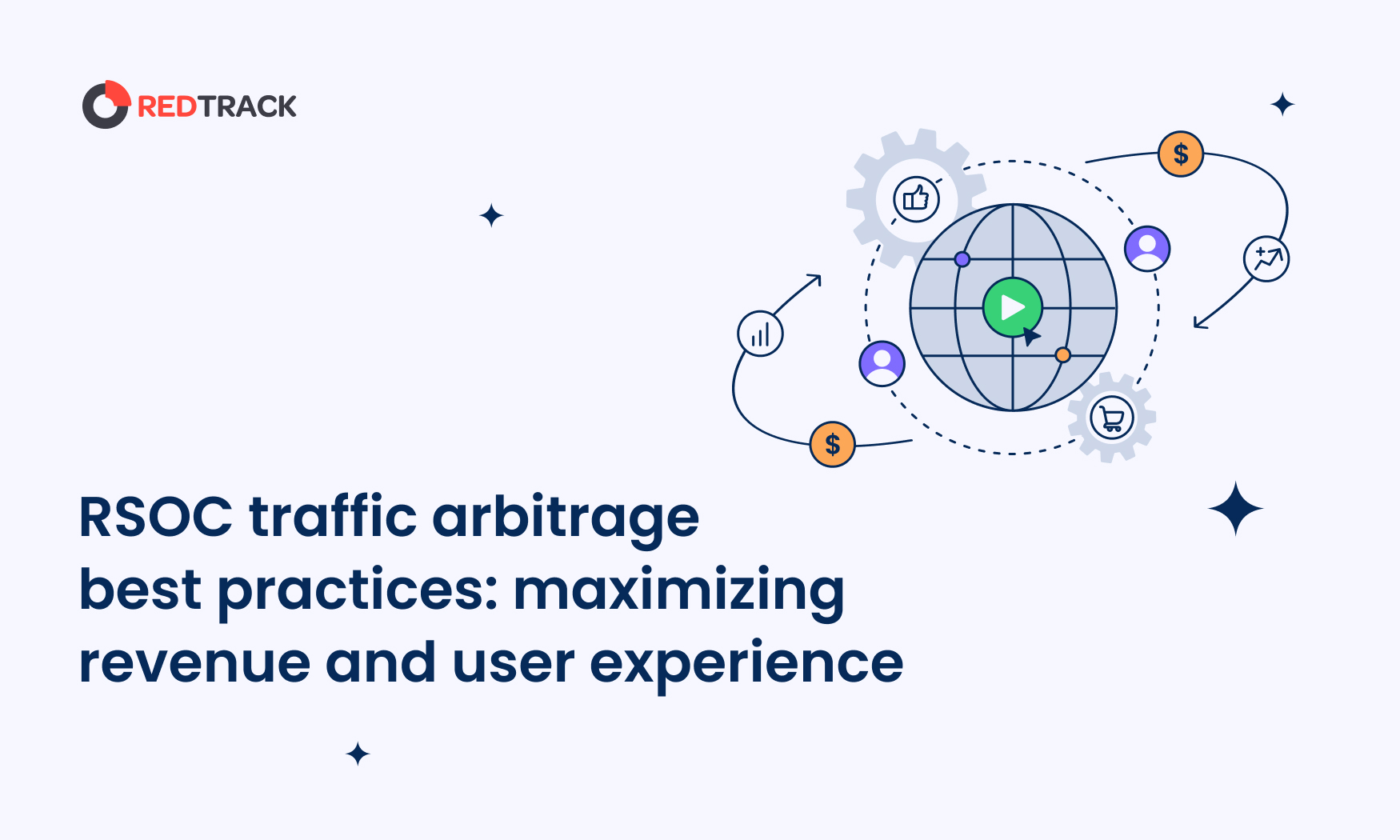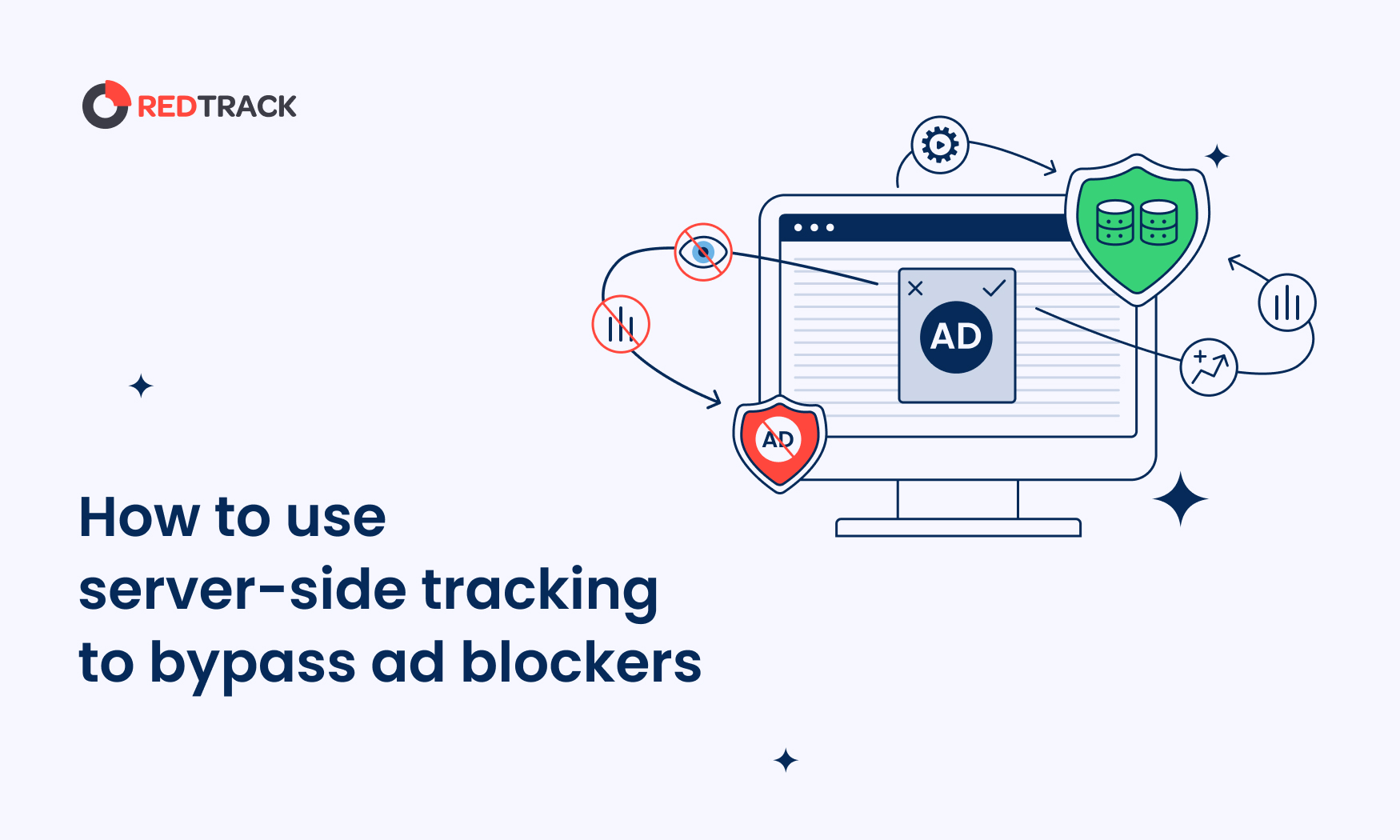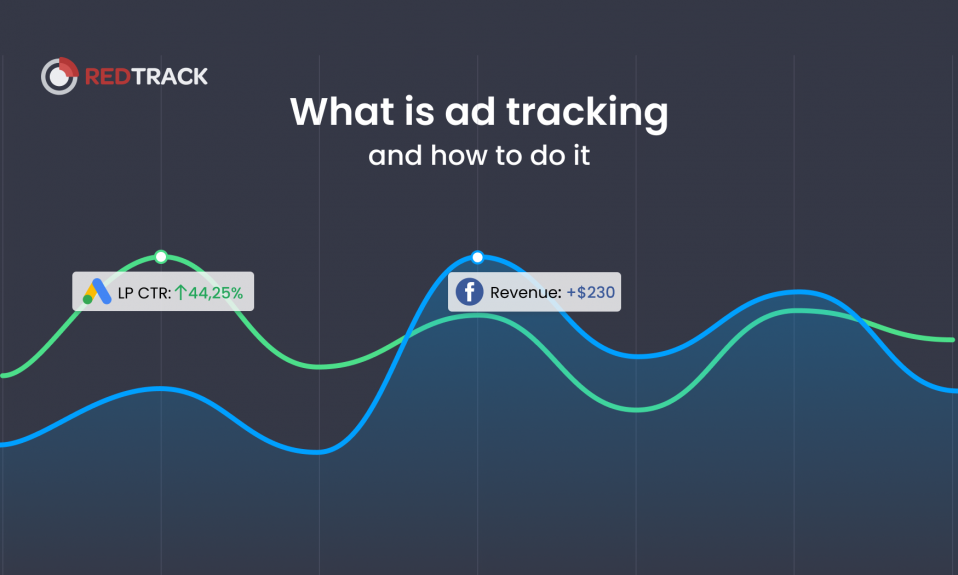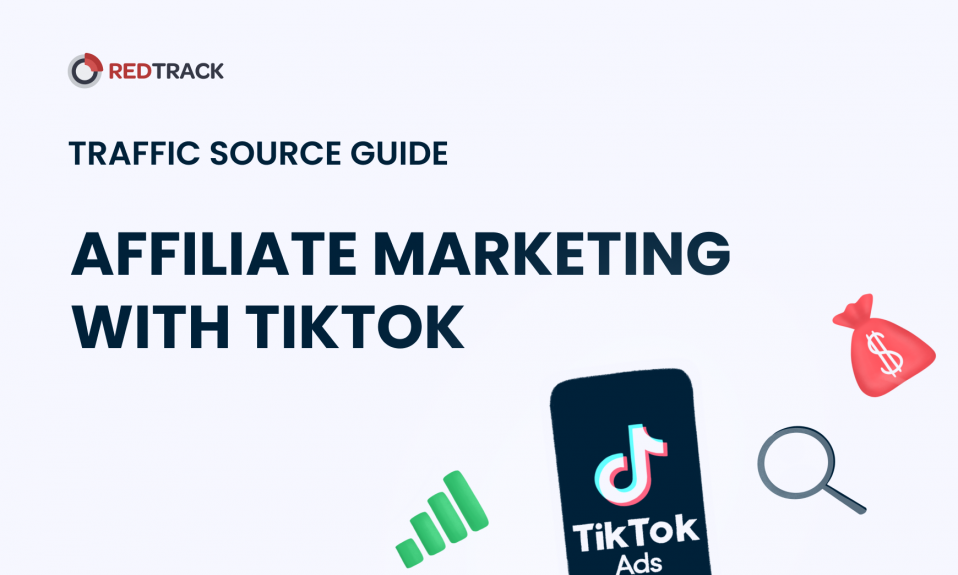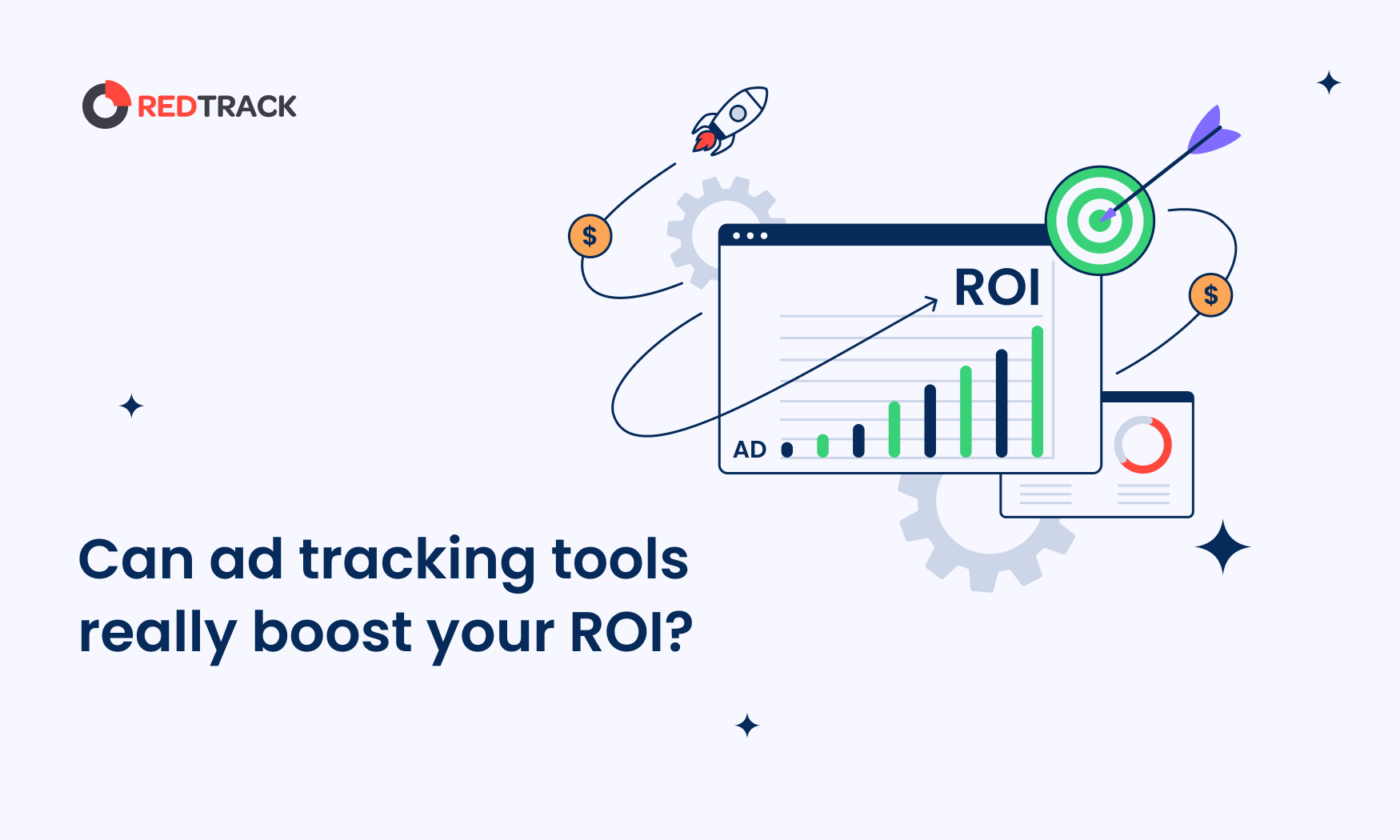
In modern marketing, advertisers constantly seek ways to maximize their ROI. However, measuring and optimizing ad performance remains a challenge due to the many channels and ad formats available, making it hard to know what’s working and what’s not.
Advertisers often find themselves figuring out how to effectively allocate their budget across various platforms, targeting options, and ad creative, while ensuring a positive return on investment.
Thankfully, this article shows you how to optimize your ROI with ad tracking and attribution software, refine your marketing strategies, and maximize your media buying efforts.
What is ad tracking and attribution software?
Tracking, in the context of ad tracking and attribution software, refers to the process of monitoring and recording user interactions with your ads, such as:
- Clicks, when a user clicks on your ad;
- Conversions, when a user completes a desired action, like making a purchase or filling out a form;
- Impressions, when your ad is displayed to a user;
- Engagements, when a user interacts with your ad, like watching a video or hovering over a display ad.
Ad tracking and attribution software helps you understand how your ads perform by tracking customer actions, such as clicks, conversions, and purchases, and attributing value to different touchpoints, like ads, channels, or campaigns, that contributed to a conversion.
Key features that help increase ROI
Maximizing ROI is the ultimate goal of any marketing campaign. To achieve this, you need the right tools and insights to optimize your strategy and drive results. Here are key features to consider that can help increase ROI:
Real-time data
Real-time data provides instant access to granular metrics, such as click-through rates, conversion rates, and cost-per-acquisition, as they happen. This allows you to identify top-performing ad creative, targeting options, and bidding strategies, and quickly pivot from underperforming campaigns to allocate budget to winners.
Cross-channel tracking
Understanding your customers’ journey is crucial. Cross-channel tracking reveals where they’re coming from, how they’re interacting with your brand, and what drives conversions.
By monitoring their path across all channels and devices, you can:
- Identify touchpoints that influence conversions;
- Optimize the customer journey for seamless experiences;
- Allocate budget effectively across channels.
Fraud prevention
Here, you protect your ad budget from fraudulent activity with reliable detection and prevention measures ensuring valid traffic and engagement, accurate campaign performance metrics, and maximum ROI and minimal waste.
Better targeting
You can reach your ideal audience with precision targeting tools, ensuring your message resonates with those most likely to convert, leveraging:
- Demographic and interest data: Target specific age groups, locations, interests, and preferences to ensure your message reaches the right people.
- Behavioral insights: Analyze user behavior, such as browsing history and purchase patterns, to identify high-intent audiences and tailor your message accordingly.
- Lookalike targeting: Identify new audiences that share similarities with your existing customers or high-performing audiences, expanding your reach while maintaining relevance.
Common mistakes and how to avoid them
Regardless of product type, marketing strategy, and objectives, every marketer has something in common: we all want to know whether our efforts are moving the needle on sales. Yet data-driven marketing is only as strong as the insights it generates – you’d need to know how to interpret it correctly.
Here are the essential tips to help you decode your metrics, and avoid common pitfalls:
- Understand your metrics: Know what each metric measures, how it’s calculated, and ensure data accuracy, completeness, and consistency.
- Consider the context: Take into account external factors like seasonality, trends, or anomalies, and analyze data over time to identify patterns and changes.
- Get a comprehensive view: Look at multiple metrics and break down data into subsets to reveal insights hidden in aggregated data.
- Avoid common pitfalls: Avoid assuming cause-and-effect relationships between metrics and focus on metrics that drive business outcomes, not just impressive numbers.
- Evaluate performance accurately: Ensure your data sample is representative of your target audience and evaluate performance against industry standards, competitors, or internal benchmarks.
In addition, flexibility in choosing the right attribution model is crucial because different models serve different purposes and may be more suitable for specific marketing strategies, channels, or goals. A rigid approach can lead to inaccurate attribution, which in turn can result in suboptimal budget allocation and missed opportunities.
Furthermore, being flexible allows you to:
- Adapt to changing market conditions and customer behaviors;
- Test and compare different models to find the best fit for your unique situation;
- Account for cross-channel interactions and multi-touch journeys;
- Refine your attribution strategy as your marketing mix evolves.
In the same vein, continuous analysis and tweaking of campaigns are essential for sustained ROI improvement. Markets and customer behaviors are constantly changing, so it’s vital to:
- Regularly assess campaign performance and attribution accuracy;
- Identify areas for optimization and reallocate the budget accordingly;
- Refine targeting, messaging, and creative assets to maximize impact.
Why RedTrack is the right choice
With so many ad tracking and attribution platforms, it can be challenging to find a solution that truly meets your needs. While numerous options claim to offer reliable tracking and analytics capabilities, RedTrack stands out for its exceptional ease of use, scalability, and cost-effectiveness, establishing itself as a top choice for businesses seeking accurate and reliable ad tracking and attribution through:
Easy integration
RedTrack offers seamless integration with over 100 affiliate networks, media buyers, and advertising platforms, making it easy to consolidate your data and streamline your workflow.
Reliable support
RedTrack’s dedicated support team provides personalized assistance, ensuring you get the most out of the platform. Their extensive knowledge base and tutorial resources also help you get started quickly.
Cost-effectiveness
RedTrack offers competitive pricing plans, including a free trial, to accommodate businesses of all sizes. Its scalable infrastructure ensures you only pay for what you need.
Advanced tracking features
RedTrack’s advanced technology allows for precise tracking of clicks, conversions, and revenue. Its AI-powered fraud detection and prevention tools protect your campaigns from malicious activity.
Real-time analytics
RedTrack’s intuitive dashboard provides real-time insights into campaign performance, enabling data-driven decisions and swift optimizations.
In choosing the right tool, you’d need to check for a platform that:
- Assesses your needs: Identify your specific requirements, such as affiliate network support or fraud detection.
- Encourages scalability: Choose a tool that grows with your business, like RedTrack’s flexible pricing plans.
- Is easy to use: Opt for an intuitive interface, like RedTrack’s user-friendly dashboard.
RedTrack’s unique combination of these features makes it an ideal choice for businesses seeking a reliable ad-tracking solution.
Common problems solved by RedTrack
Maximizing ROI and driving business growth through effective advertising is a top priority for marketers. However, common challenges can hinder success. RedTrack addresses these major issues:
- Wasted budget due to ineffective ads: RedTrack helps eliminate wasted budget by providing accurate attribution and tracking, ensuring that marketers only pay for effective ads including:
- Eliminating underperforming ad creatives;
- Inefficient targeting options;
- Poorly optimized campaigns.
- Inaccurate targeting and audience segmentation: RedTrack’s advanced analytics and customer journey tracking enables precise targeting, reducing the risk of reaching the wrong audience by:
- Excluding unresponsive audiences;
- Creating precise audience segments based on behavior and demographics;
- Ensuring ads reach high-intent users.
- Ad fraud and click spam: RedTrack’s built-in fraud detection and prevention tools protect marketers from ad fraud, saving them thousands of dollars in wasted budget through:
- Labelling and blocking fraudulent traffic sources;
- Detecting and preventing click spam;
- Ensuring accurate conversion tracking.
- Limited visibility into customer journeys: RedTrack provides a complete customer view, tracking journeys across all channels, devices, and touchpoints, giving marketers unparalleled insights. This includes:
- Tracking cross-channel interactions;
- Identifying touchpoints and conversion paths;
- Analyzing customer behavior and preferences.
- Inefficient campaign optimization: RedTrack’s real-time analytics and user-friendly dashboard enable marketers to optimize campaigns quickly and easily, improving performance and ROI. Significant highlights includes:
- Real-time campaign monitoring;
- Automated alerting and notification;
- Easy A/B testing and experimentation.
- Scalability issues and infrastructure limitations: RedTrack’s scalable infrastructure and advanced tracking capabilities support high-volume campaigns, making it an ideal solution for growing businesses by:
- Handling high volumes of traffic and data;
- Scaling with business growth;
- Ensuring infrastructure reliability and uptime.
By solving these common problems, RedTrack empowers marketers to maximize their ROI, improve campaign performance, and drive business growth.
Case study: How Venture Beyond scaled Facebook ad spend over 4M with RedTrack
Venture Beyond, an e-commerce growth agency, faced challenges with Facebook attribution and ad tracking, particularly after the iOS 14 update disrupted Facebook’s attribution capabilities. To overcome these issues, they partnered with RedTrack, which provided server-side tracking through postback URL tracking, accurate reports, and real-time data.
With RedTrack’s solutions, Venture Beyond was able to scale its Facebook ad spend from $300k to $1.5M. They could identify winning creatives and scale them instantaneously, while also successfully managing multiple client accounts and tracking valuable metrics for client success.
Venture Beyond chose RedTrack for its data accuracy and unbiased source of facts, as well as the ability to choose its attribution setting, including first-click attribution. Overall, RedTrack’s solutions enabled Venture Beyond to overcome Facebook attribution challenges, scale their ad spend, and achieve significant revenue growth.
Conclusion
Maximizing ROI in digital marketing requires accurate ad tracking and attribution. By leveraging the right tools, features, and a platform like RedTrack, you can optimize your campaigns and drive results.
If you’d like to learn more about RedTrack and how it can benefit your business, click here to get more information. You can also stay up-to-date on the latest tips and strategies for maximizing ROI in digital marketing by subscribing to our newsletter now for exclusive access to expert insights, industry trends, and more.




